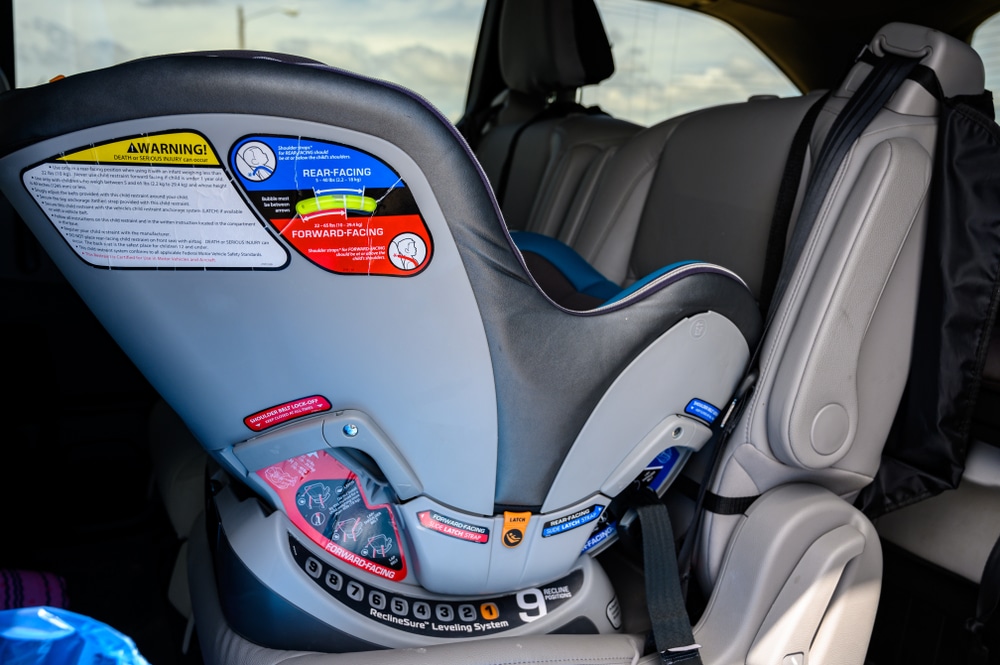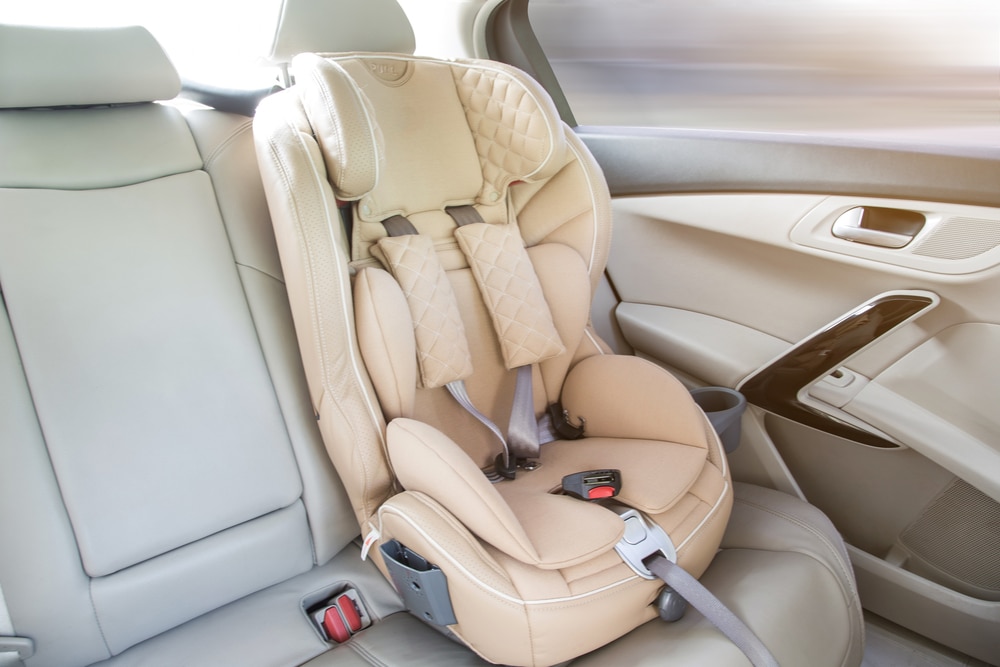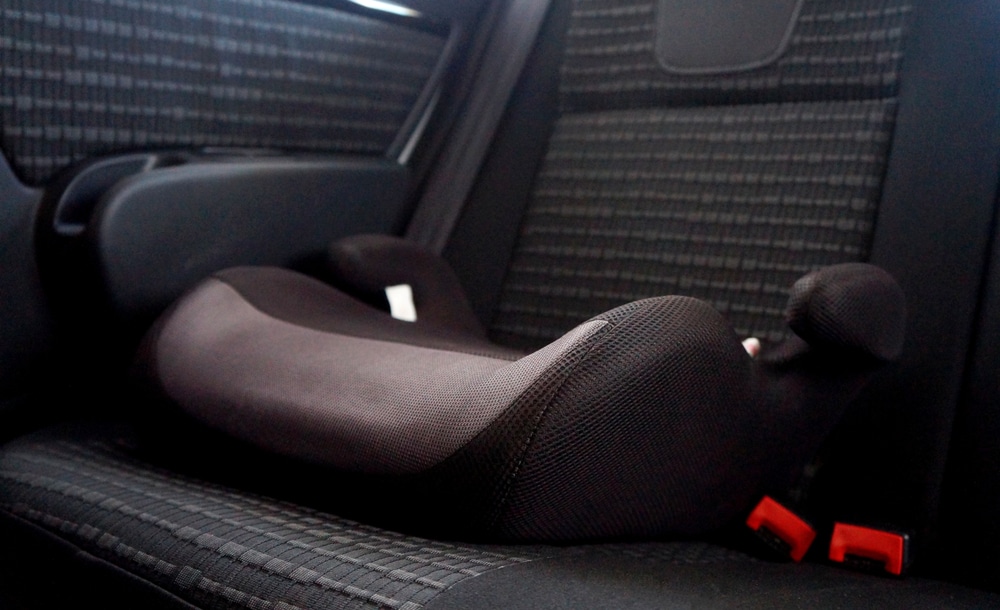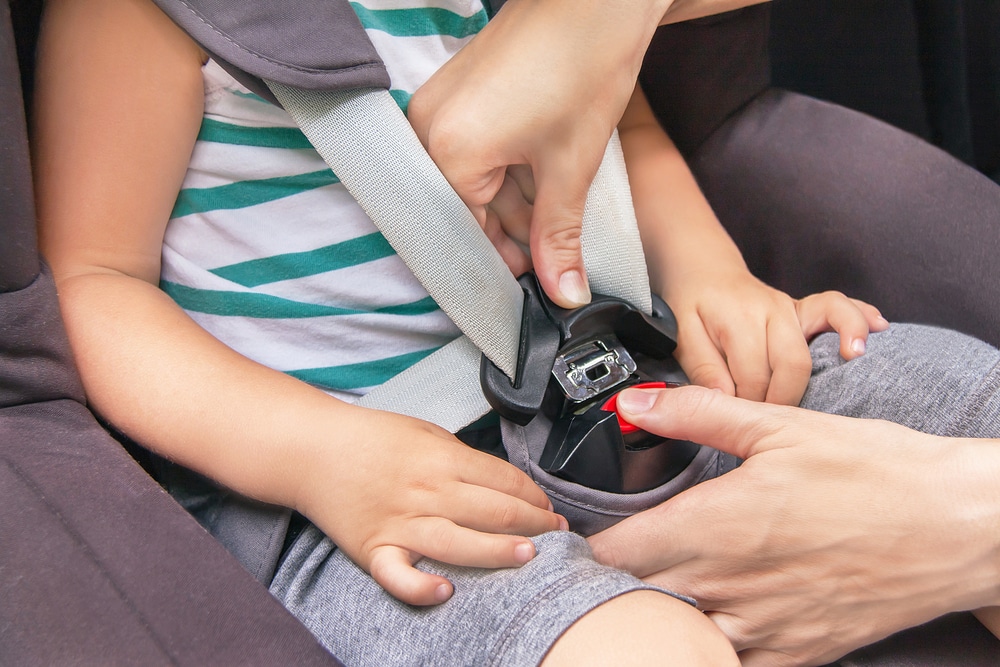Minnesota Child Passenger Safety statute 169.685 outlines the laws regarding safely transporting children in a vehicle.
In Minnesota, children under eight have to sit in a federally approved child safety seat. This state uses age or height to determine when a child is safe to ride without a full car seat or booster seat. However, their standards meet the minimum safety precautions, so some parents may choose to follow the guidelines of the National Highway Traffic Safety Administration.
This article will look at the Minnesota car seat laws. We’ll break down the different car seat types and requirements for transitioning to the next seat. We’ll also compare these safety standards to those of the NHTSA.

Minnesota Child Safety Laws
Minnesota outlines the state laws regarding the use of car seats for children in their Minnesota Statutes. This law falls under Chapter 169, Section 685.
This state bases a child’s need to use a car seat on age or height, unlike some states that set their standards on age alone.
Taking both height and age into consideration is a safer option. Still, Minnesota’s safety standards do not line up with the National Highway Traffic Safety Administration’s more strict and detailed measures (NHTSA).
To meet MN child seat laws, your child should remain in a federally approved child safety restraint seat until they are at least 4’9″ and over the age of eight. If your child is tall for their age and meets the height requirements but not the age, you could be in violation of the law.
This law applies to all drivers in the state of Minnesota, regardless of whether you are a resident or visitor. In all cases where there is an issue regarding compliance with the law, the driver is held responsible.
Exceptions to the Law
There are exceptions written into the Minnesota law regarding children’s transportation without using an appropriate child safety seat. But in most cases, there are no exceptions made for why your child is not sitting in a car seat.
During an official activity, children transported in an emergency medical vehicle may not require being secured in a child safety seat. If securing the child will affect their physical or medical condition, the law is exempt.
If your child has a medical condition that prevents them from being secured in a car seat, you may be exempt from the law. However, you will need proper documentation in the form of a typewritten note from a licensed physician.
Your form should include the child’s name and birthday, and the date of issue must be within the last six months. The statement should be on the doctor’s official letterhead or display the name, telephone number, and doctor’s office address.
Differences in Minnesota Car Seat Law
Minnesota allows children to stop using a car seat once they are eight years old and at least 4’9″ tall. These are the same parameters that the National Highway Traffic Safety Association uses to set their safety recommendations.
But the NHTSA has different recommendations on the age when a child should stop using a car seat. Their standards state that it may be unsafe for your child to be without a safety seat until up to twelve years of age.
You should use your child’s height to determine when to transition from a booster seat to a seat belt, rather than their age. But to comply with the law, your child must be at least eight years old.
Rear-Facing Car Seats in Minnesota

Minnesota requires you to use rear-facing car seats for all infants. Many babies outgrow their original rear-facing car seats around 20 to 25 pounds.
But the NHTSA recommends upgrading to a larger rear-facing child seat until they’re 40 to 45 pounds. This can be up to three years of age for some children.
You can transition to a forward-facing car seat once your child reaches the manufacturer’s maximum height and weight restrictions.
Forward-Facing

Your child may be ready for a forward-facing around the age of two to four. Once your child grows out of a rear-facing seat, you can put them into a full-body, forward-facing car seat.
Minnesota requires all children to be in a forward-facing child restraint seat if they have not yet transitioned into a booster seat but have outgrown a rear-facing seat. You must use a seat containing a harness and tether to comply with Minnesota’s law.
Booster Seats

MN booster seat laws require children under the age of eight and less than 4’9” height to use a booster seat.
There is no restriction regarding whether your child’s booster seat needs to have a back. Or if it can just be a base that elevates your child higher in the seat so that the seat belt fits more securely. Children who recently transitioned from a full car seat to a booster seat may need one with a back.
Most children outgrow the back of a booster before they need to stop using the elevated platform. Minnesota allows your child to stop using a booster seat once they’re over eight years old or once they’ve met the minimum height requirements.
Seat Belts

Once your child can sit with their back against the seat and their feet touching the floor while their knees are bent, you can transition your child to a seat belt, without the need of a child safety restraint.
However, it’s best not to let your child ride in the front seat for safety reasons until they are over the age of twelve. The passenger airbags are dangerous for young children and can cause severe or fatal results.
Moving your child to a seat belt before they are ready can result in severe injuries if there is an accident. When a seat belt doesn’t fit over your child’s lap properly, it can cause damages to the spleen, intestines, and liver. Improperly fitting neck-straps can cause injury to the chest, ribs, and neck.
Penalties for Violating Minnesota Car Seat Law
If you are caught violating the Minnesota Child Passenger Safety statute 169.685, you can be found guilty of a misdemeanor offense. You may receive a citation and have to appear in court.
This charge can result in a fine of less than $50. This fine might be reduced or waived if the accused presents evidence of a federally approved child safety seat within 14 days of the violation.
If a law enforcement officer believes that you are failing to meet the proper child safety laws, they have a valid reason to stop your vehicle. You may be issued a citation if you are found to be in violation of using the proper car seat for your children.
In Closing
Minnesota has laws in place to help keep children safer while riding in a vehicle. In this state, a child has to be at least eight years old and 4’9″ in height. Failure to meet these requirements can result in a misdemeanor and a fine of $50. It can also lead to injuries if there is an accident. Minnesota’s safety guidelines reach the minimum safety precautions, but some people prefer to use NHTSA’s requirements instead.







Hi Joanne,
Where are you finding the Law that you must have a tether on a car seat in MN? I am looking for that. Thank you for your help.
Holly, thanks for your question. This link would be helpful for you to go through. https://dps.mn.gov/DIVISIONS/OTS/CHILD-PASSENGER-SAFETY/Pages/default.aspx